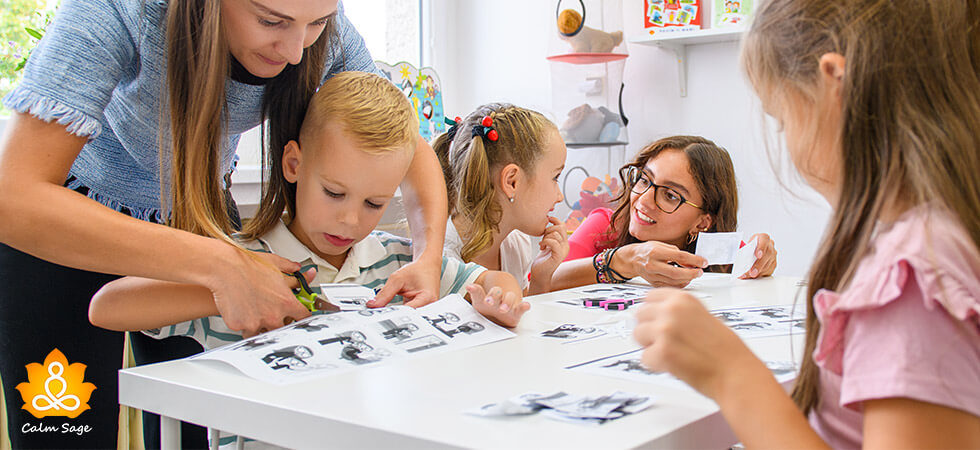Occupational Therapy For Autism: Role, Activities, And More

Occupational therapy is known to be one of the most effective treatment options for autism spectrum disorder (ASD). Autism is a neurodevelopmental condition that disrupts social communication skills, thus resulting in repetitive and restrictive behaviors. Research shows that the prevalence of autism has increased in the US approximately 1 in 36 children are diagnosed with autism.
Autism can be diagnosed in the stages of childhood (typically after five). Occupational therapy is one of the effective treatment modes for autism because it is an evidence-based approach and helps children live their lives more independently and successfully.
In this blog, we will be taking a deep look at occupational therapy, its roles, activities involved, and more. So, let’s get started!
What is Occupational Therapy?
Occupational therapy is an evidence-based therapy that helps autistic children or people develop, maintain, or recover their abilities to engage in effective communication, and daily activities, and improve their sensory and motor skills. Occupational therapists help promote direct communication between children and their parents.
This helps in meeting the individual needs of the client. Throughout the therapy sessions, the therapists work on sensory, cognitive, physical, motor, and emotional abilities to develop effective goals and treatment plans for the patient.
What is the Role of an Occupational Therapist in Autism?
Occupational therapy is an effective treatment mode for autistic children as it helps in evaluating current developmental stages and improves children’s ability to express their emotions and self-regulate them.
Additionally, it also helps in building strengths. An occupational therapist starts the treatment process by evaluating the patient on the basis of different screening tools such as sensory profile, ASD checklist, and other screening tools listed in the Diagnostic and Statistical Manual of Mental Health Disorders 5th edition updated version (DSM-5-TR).
The evaluation process of an occupational therapist includes:
- Caring
- Interacting
- Learning
- Playing
An occupational therapist works on different areas, such as:
- Social improvement: An occupational therapist helps in improving interactions, emotional regulation, desire for personal space, aggression, behaviors, eye contact, and more.
- Promoting communication: An occupational therapist helps in improving non-verbal and verbal communication.
- Improving Cognitive, sensory, and motor skills: An occupational therapist helps in improving stamina, attention span, stimulus-response, sensory defensiveness, posture, manipulation, and balance.
Below listed are the roles of an occupational therapist:
- Building sustainable space to strengthen focus and attention
- Using rewards or graphics to encourage developmental progress
- Using rubrics to avoid confusion and promote clear vision
- Promote a sensory diet to fulfill sensory input requirements
- Using mindful techniques to help manage stress and promote self-control
What Types of Activities are Involved in Occupational Therapy for Autism?
A list of activities involved in occupational therapy for autism includes:
- Cognitive improvement for supporting positive behaviors
- Emotional development
- Mental health treatment
- Motor development
- Peer groups and social participation
- Play activities
- Self-care routines involvement
- Self-regulation strategies
- Sensory integration
- Transition of an adolescent into adulthood
What are the Benefits of Occupational Therapy?
Below listed are some of the important benefits of occupational therapy:
- Develop and maintain relationships
- Improves overall quality of life
- Improves self-regulation of emotions in a healthy and productive way
- Improve anxiety and aggression
- Promote communication skills
- Promote self-confidence and independence
- Promote gratification
- Group working and participation strategies
Parents Guide: How to Make the Best Use of Occupational Therapy?
If your child is under occupational therapy, here’s what you can do to improve the recovery process:
- Collaborate with therapists and other professionals to learn about therapy and autism
- Create a holistic and supportive environment at home
- Constantly ask for feedback or insights to improve the daily life and routine of your children
- Seek proper education, support, and guidance through other parents attending sessions.
- Allow your child to communicate openly and share your concerns and observations with the therapist
- Take the help of online resources, support groups, and information to learn more about the autistic community and help the community enhance its understanding of the same
How to Find an Occupational Therapist?
Most autistic children in the US qualify for free occupational therapy. The therapy provided through free programs covers basic areas that may not show effective results as compared to paid therapy.
In such cases, parents can take the help of private therapy (insurance-based). To find an occupational therapist nearby, you can look into directories or seek recommendations from local schools and other fellow parents.
For more references and information, you can also go through: American Occupational Therapy Association
I hope this blog helps you with everything you want to know about occupational therapy. Comment down and share your views on the same. For more such content, connect with us through all social media platforms.
Thanks for reading!




















